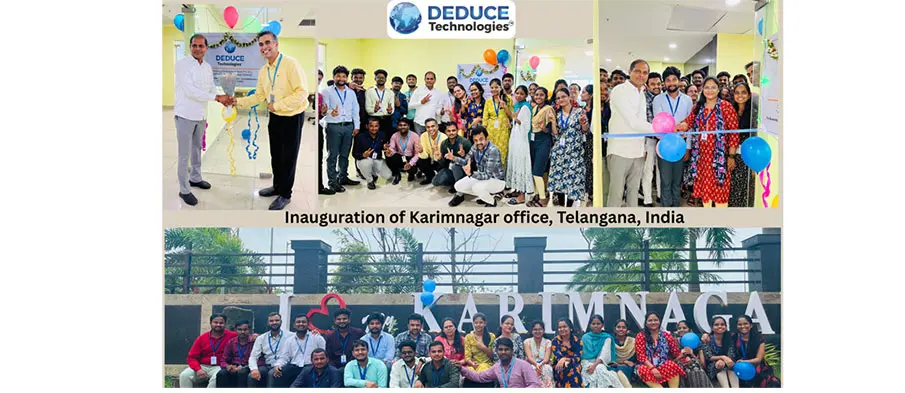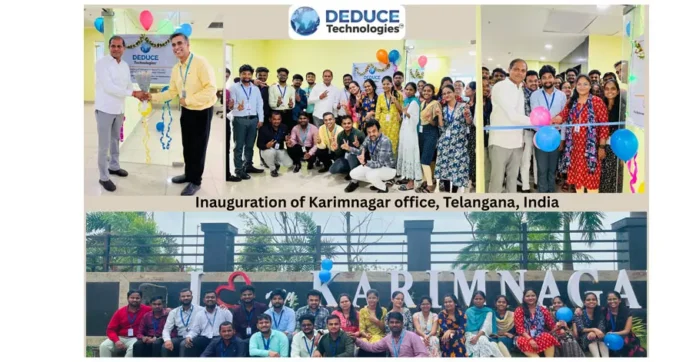
Why the Last Mile Is the First Problem for reaching “The Heart of Bharat”
By Brajesh Shrivastava, CEO of Deduce Technologies
Bharat doesn’t have a delivery problem; it has a discovery problem.
E-commerce and instant delivery brought about a logistics revolution that promised speed and convenience. But today, it confronts its blind spot: often, it doesn’t know how to reach a destination.
Shipments with groceries, medicines, documents may be tracked in real time, but they often lose their way in the last 100 meters. Every missed turn cost time, money, and customer trust. Globally as per Mapillary, an estimated $6 billion is lost each year to such mapping inefficiencies.
Globally addresses are not always mapped properly, because our maps are static not dynamic. In The Heart of Bharat, especially our Tier 2 and 3 cities, addresses can be handwritten myths and house numbers change faster than the four seasons. Thus, delivery failures are not logistical failures, but a result of geospatial blind spots.
We speak of Bharat’s growth in numbers: 1 billion smartphone users by 2026, over 900 million internet users today. But in these statistics, there is an asterisk: Can this person be truly reached, physically?
The challenge is to build digital delivery platforms that can differentiate between “near the water tank” and “behind the third lane next to the banyan tree,”; to make sure it’s designed for the real Bharat, not just Lutyens’ Delhi.
More GPUs, more hands-on deck, or even more funding will not fill this gap. What we need is a tech-enabled platform that communicates between the ‘mapped city’ and the ‘living city’. We need new infrastructure to be built hand in hand with smart location interpretation, that honours the unique context Bharat brings, i.e., real-time, hyperlocal, language-aware, culturally annotated, socially alive, human driven spatial intelligence. Bharat’s hinterland runs on systems like the Dabbawallas, delivering with Six Sigma accuracy in a world where everything can go wrong, yet nothing does, because their delivery mechanism is human, contextual, and alive. What we need is a synchronisation of contextual tech, precision-led economics, layered policymaking, and the ability to confront frictions that plain, vanilla mapping alone can’t resolve.
What the Coordinates Can’t Tell You
The challenge is not locating people and places but teaching systems how to read Bharat’s intricate web of hyperlocal nomenclatures, that is more densely populated than all of Europe.
Legacy grids and the fixed address structure works in planned cities, but much of the heart of Bharat moves on approximation and memory. “Past the chowk, behind the temple, near the banyan tree.” remains the norm. GPS stops at boundaries; it doesn’t account for gates, internal lanes, or daily improvisations of nature and municipalities.
Intelligent Geospatial platforms can address this information gap, once they integrate this context. Mapping layers can capture hyperlocal details, such as entry gates, service roads, reception zones, potholes, road diversions, parking areas and walkable paths. These details may sound trivial, but in the last mile ecosystem, these is the difference between top line revenue or profitable revenue which further cascades into difference between customer retention and customer rejection.
Case in point are schemes like Pradhan Mantri Awas Yojana and MNREGA, where geospatial intelligence was implemented in slum redevelopment initiatives. Spatial overlays were used to identify previously undocumented dwellings beyond Metros, in places like Mysuru, Rajkot, and Tikamgarh. Just by bringing them in the ambit of visibility, occupants in these cities became eligible for housing, sanitation, and water body restoration – amenities which were once inaccessible by default. Beyond mere pilot projects, such success stories are proof that the map, infused with context, can assist in better policy, faster logistics, and equitable governance in line with the government’s vision of “Sabka Saath, Sabka Vikas” (Together with All, Development for All).
The Cost of Being Off the Map
Beyond money, Bharat is losing entire markets due to poor Digital Maps.
Delivery failures from outdated location data are well-documented, with up to 20% of e-commerce package deliveries failing on the first attempt. When eCommerce platforms face persistent delivery failures, they opt to avoid entire geographies where addressing and location data is unreliable. This workaround turns into mapping exclusion and converts them into a Digital Delivery no-zone, even within Metro cities. We end up fencing out customers, increase ecommerce platform churn, and diminishing trust in digital commerce, making the entire ecosystem counterproductive which results in stifling last-mile access in the Digital Economy.
This is where geospatial intelligence can evolve from being a fix to a growth lever. With hyperlocal mapping, real-time routing, and landmark-based guidance, companies stand to reduce operational costs significantly in complex zones, while simultaneously improving first-attempt delivery success rates.
Several government initiatives are winds in this sail. Initiatives like DIGIPIN, an open-source geo-coded addressing system by Department of Posts; and Digital Door Numbering (DDN) by district agencies are tackling the challenge of precise, scalable addressing. The Open Network for Digital Commerce (ONDC), incubated by DPIIT, is working to democratise e- commerce in Bharat by providing an open, interoperable network for buyers and sellers.
Every point added to the map is a household added to the market. Every layer of map intelligence added today is a reduction of fiscal waste tomorrow. Being off the digital delivery map means being off the grid for cost-efficient services in the new Bharat. Thus, mapping location dark zones with the fidelity they deserve will be a civic gain as well as a market multiplier for Viksit Bharat’s mission to be a $5 trillion economy.
Persistent Frictions in Mapping Bharat
Even the most accurate map is useful only if the systems around it know how to leverage it. This is where Bharat’s geospatial shift meets its real hurdles. The challenges today don’t question the existence of technology, but whether it can be stitched into the everyday functioning of governance, logistics, and delivery at scale to support the juggernaut that is 1.5 billion strong, and the fastest growing economy in the world.
Coordination is one of the most deep-rooted obstacles. Different departments work with different datasets, often years apart in update cycles. One system might rely on a 2017 satellite scan, another on last week’s GPS logs, while a third still uses printed layouts. Without a shared framework, even the best maps fail to sync into decisions.
Complicating this issue further is the challenge of Access. In many Tier 2 and 3 cities and towns, the digital plumbing required for real-time updates simply doesn’t exist. This makes geospatial systems fragile: capable on paper, but prone to failure, when connectivity lags.
To tackle this, the Department of Land Resources is leading Bhu-Aadhaar, a project to create a unified, accurate, efficient, and transparent land records system across Bharat. It’s a crucial step, though still a work in progress.
And finally, there’s Context. People don’t use coordinates, they use memory. They navigate by familiar turns, “tea stalls, and temples”. Once, a navigation guide even suggested turning “when you see a troop of monkeys on treetops”. This is how navigation works in the heartland of Bharat: if a system can’t interpret these human cues, it can’t truly guide movement on the ground.
Conclusion
When visibility is patchy, inclusion becomes selective. The Digital divide in Bharat can’t be bridged solely by UPI, Aadhar and World’s cheapest mobile data plans. Till Digital Delivery highway doesn’t reach the Heartland of Bharat, we can never have an inclusive economy. As a key Digital Pillar, Geospatial intelligence has potential to graduate from a backend fix to frontline engine for ONE Bharat. Whether it’s onboarding the next billion users, reducing delivery losses, or enabling equitable governance, the common denominator is visibility.
To be seen is to be served, and for Tier 2 and 3 India, the path to inclusion begins not with distribution but with discovery. Until we map Bharat as it lives, not just as it’s planned, the path to Digital Delivery for “The Heart of Bharat” will remain a journey rather than a highway to prosperity.





